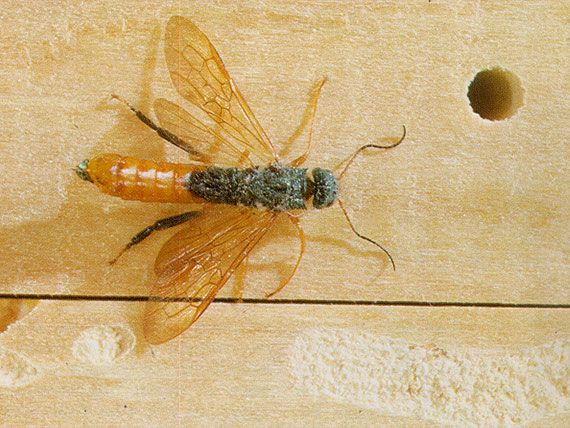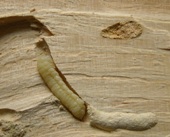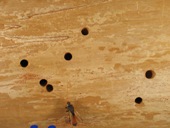Wood wasps
Wood wasps belong to the damp or freshwood category of insects. They only lay their eggs on ailing trees or freshly cut timbers. They can, however, gain access to new buildings in freshly cut constructional timbers.
As wood destroyers, they are not particularly significant. Depending on the extent of infestation, the wood can be transversed by frass galleries, though rarely enough to cause any structural weakness.
How do wood wasps look like?
Some species of wood wasp can grow up to 4 cm long. The giant wood wasp (or horntail) is black and yellow, while the common wood wasp is blue-black with a metallic sheen and has reddish-yellow legs. The females of both species have a long ovipositor at the end of the abdomen. The larvae that feed on the wood are white with six small feet on their breast and a dark spike on their abdomen. The wood wasps’ exit holes are circular and have a diameter of 4 – 7 mm, depending on the species.
What damage can wood wasps do?
As freshwood insects, the hatched adult wood wasps do not attack the timbers in buildings or structures again. Treatment is therefore not usually necessary. However, when hatching, the adult wasps can cause damage to materials lying on the surface of the timbers, such as carpets or parquet flooring.



